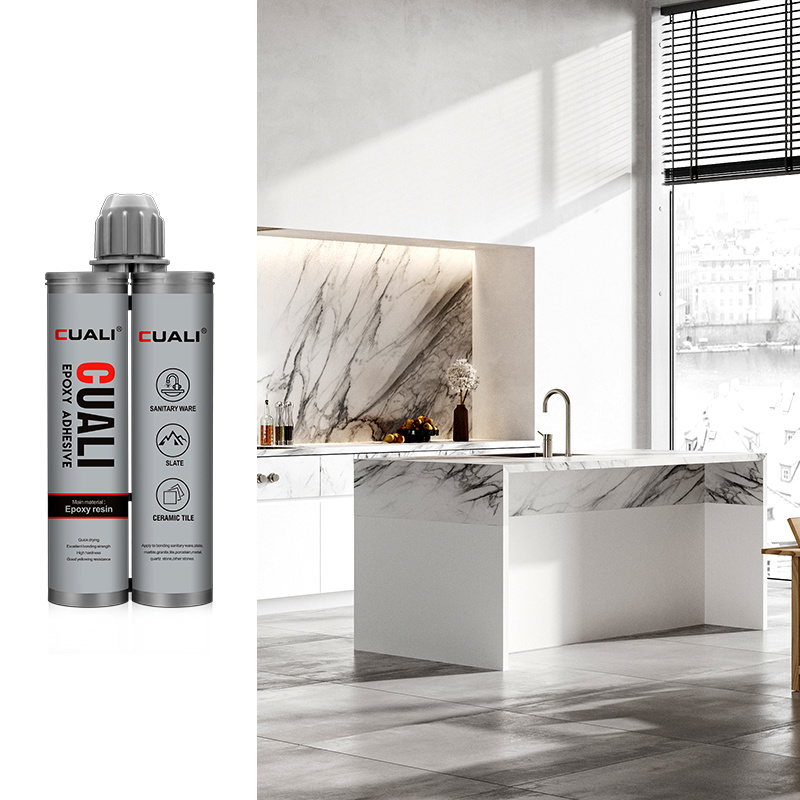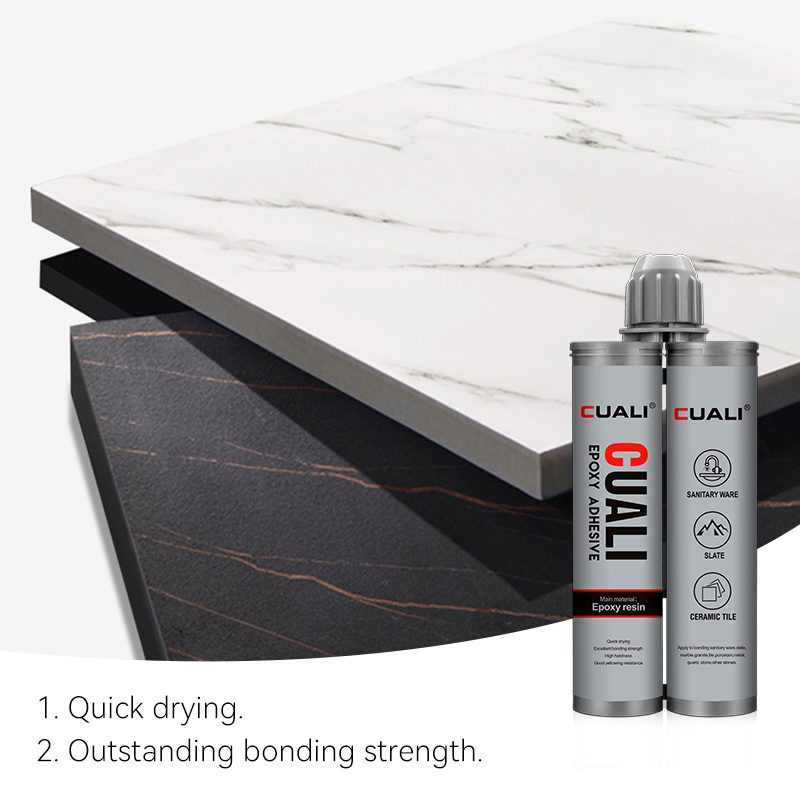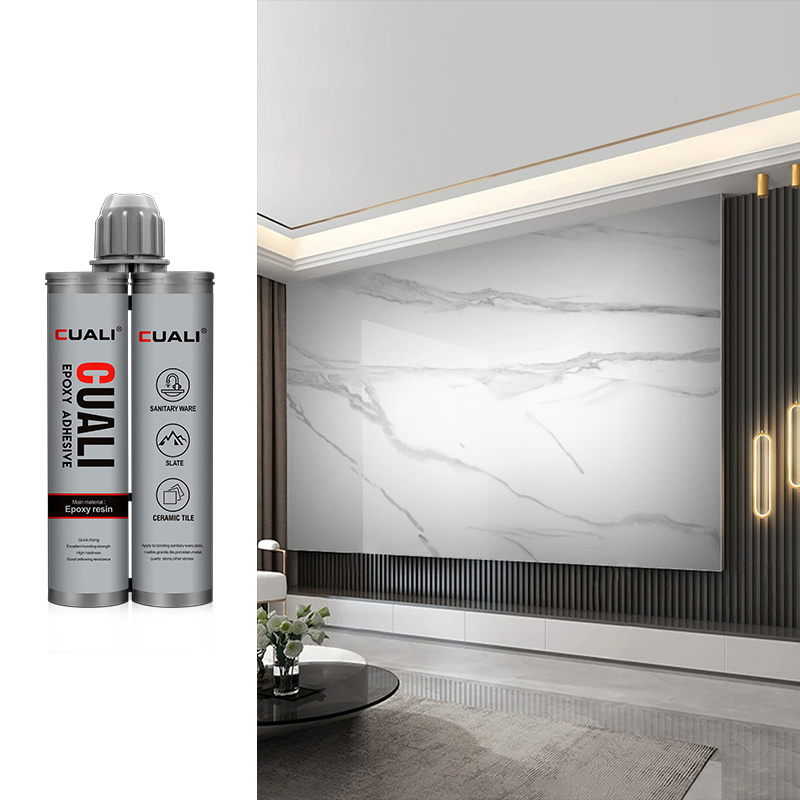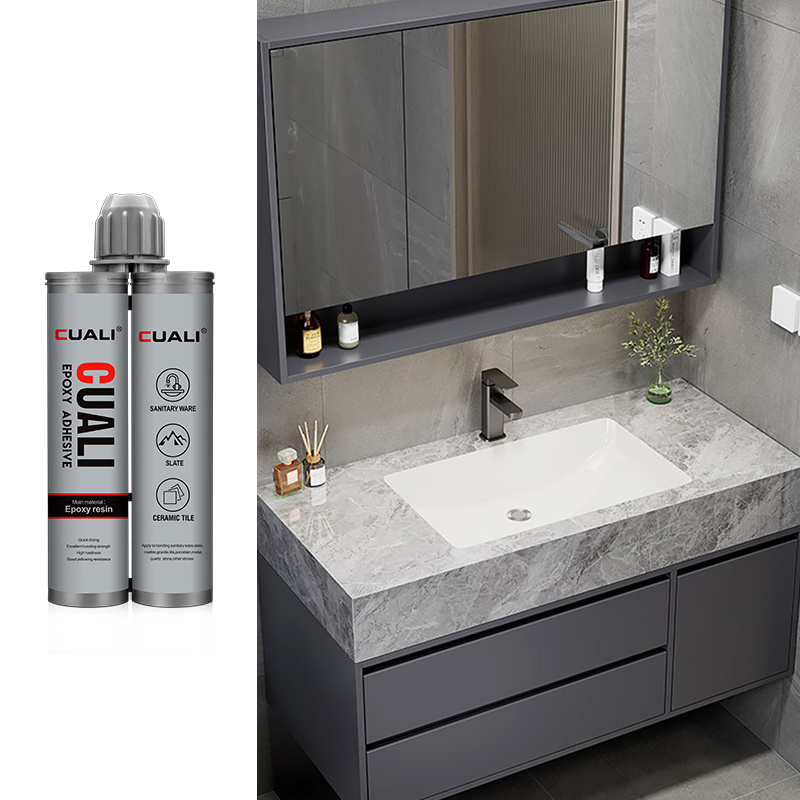
Best Materials for Fast-Drying Marble Bonding
When bonding marble—whether for renovation, repair, or installation—fast drying, strong adhesion, and compatibility with marble’s porous, brittle surface are key. Below are the most suitable materials, along with their traits, uses, and tips:
1. Epoxy Resin Adhesive (Two-Part)
- Core Traits: Fast curing (most set in 1–4 hours at room temperature; some "quick-cure" versions dry in 15 minutes), high bond strength (resists impact and weight), and low shrinkage (avoids cracking marble). It also has good water and stain resistance, making it suitable for indoor and semi-outdoor use.
- Best For: Critical bonding tasks like marble countertop splicing, floor tile installation, or repairing large marble cracks. Works for both light-colored (e.g., Carrara white) and dark-colored (e.g., Nero Marquina) marble—choose "transparent" or "marble-matching" shades to hide seams.
- Tips: Mix the resin and hardener strictly per the ratio (usually 1:1 ); apply a thin, even layer (too much may seep into marble pores and cause discoloration). Avoid using on marble exposed to direct sunlight for long periods (some epoxies yellow over time).

2. Cyanoacrylate Adhesive (Super Glue for Marble)
- Core Traits: Ultra-fast drying (sets in 10–60 seconds), ideal for small, non-load-bearing repairs. Most are formulated with "marble-compatible" additives to reduce brittleness and prevent staining.
- Best For: Fixing small chips (e.g., marble edge nicks), reattaching small marble pieces (e.g., decorative marble inlays), or bonding lightweight marble accessories.
- Tips: Only use it for tiny areas—its bond strength is lower than epoxy, so it can’t handle heavy loads (e.g., countertop support). Wipe excess glue immediately with acetone (avoid scratching marble).

3. Polyurethane Adhesive (Fast-Cure Type)
- Core Traits: Dries in 2–6 hours, flexible after curing (absorbs slight vibrations or thermal expansion, perfect for marble floors), and resistant to moisture and temperature changes (-30°C to 80°C).
- Best For: Bonding marble to wood, concrete, or metal substrates (e.g., attaching marble wall panels to wooden frames, or marble thresholds to concrete floors). Also works for outdoor marble (e.g., patio marble tiles) thanks to its weather resistance.
- Tips: Ensure the substrate (e.g., concrete) is clean and dry—dust or moisture weakens adhesion. Choose "low-VOC" versions for indoor use to reduce odors.
4. Marble-Specific Fast-Dry Cementitious Adhesive
- Core Traits: A mix of Portland cement, polymers, and fast-setting agents—dries in 3–8 hours, bonds tightly to porous marble, and matches marble’s natural rigidity. Economical for large-area installations.
- Best For: Installing marble floor tiles in high-traffic areas (e.g., hallways, lobbies) or bonding marble to concrete substrates (e.g., basement marble floors).
- Tips: Mix with clean water (follow the product’s water ratio) to avoid lumps. Apply a 3–5mm thick layer—too thin may cause hollowing under marble.

Key Considerations for Marble Bonding
- Avoid acidic adhesives: Acids (e.g., some cheap super glues with acidic formulas) can etch marble’s surface, leaving permanent stains.
- Test on scrap first: Especially for light-colored marble—apply a small amount of adhesive to a marble scrap and check for discoloration after drying.
- Control temperature: Most fast-dry adhesives work best at 15–25°C. Below 10°C, curing slows down; above 30°C, some epoxies may cure too quickly and crack.

Summary:
For fast-drying marble bonding, two-part epoxy is best for high-strength, seamless tasks (e.g., countertops); cyanoacrylate suits small repairs; polyurethane works for flexible, outdoor/heterogeneous bonding; and cementitious adhesive is ideal for large-area floor installations. Choose based on load, environment, and marble type.
Time:
2025-08-23
More News
